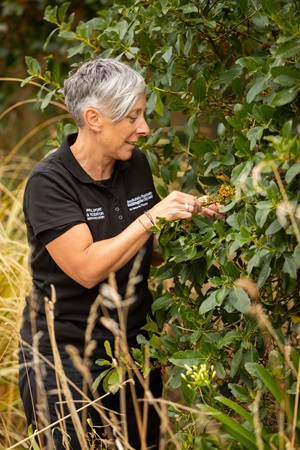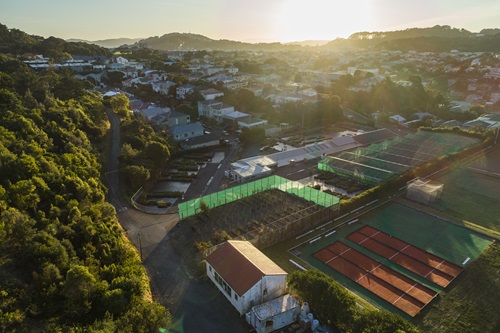When she's not out and about, she's immersed in seed propagation back at her Berhampore Nursery base
Each year the nursery grows more than 85,000 native plants, which are then distributed to community groups and the Wellington City Council parks and gardens team for planting.
They are planted in Council reserves, new housing developments, sites where it is no longer safe for the Council mowing team to mow, and also the nursery’s road reserve scheme.
Valissa has spent the past three years in her Council role propagating more than 250,000 plants.
Each year the challenge is to collect seed and propagate a range of native species such as kawakawa, rangiora, mahoe and kowhai - just to name a few. The seeds are eco-sourced from the local Wellington reserves to preserve the ecological integrity of the region.
“Nature dictates how much seed I can collect and from what species. Some years, certain species might not produce seeds, so I try to collect more from other species to compensate for that.”
READ MORE:
Top stargazing spots for Matariki
Kid zookeeper reporting for duty
Hardy to handle famous Wellington wind
The success of Valissa’s seed collecting is all about understanding what is happening in our native reserves.
“We have a purpose built iPad application to plot specific species and their location. I can map where the plants are, whether it’s in flower and if it has green or ripe seed. I can also document if I’ve collected seed from a particular plant before and record when I think I need to go back and revisit that site.”

It can take time to find and collect seed of certain species such as matai, totara or kahikatea.
Valissa gives an example of titoki: “This has produced very little seed in the last two years”.
Her busiest time of the year for collecting seed is December through to April.
On wet days and during the rest of the year she can be found in the nursery either propagating or pricking out tiny native seedlings.
“Most of our native plants we grow here in the nursery can take up to a year to be ready for planting out, while other species can take up to three years or longer,” explains Valissa.
Valissa completed an Amenity Horticulture apprenticeship with the Council Parks and Gardens team in the 1990s, and began working in the city horticulture team before travelling and working overseas and raising a family. Valissa has since returned and recently upskilled her qualification to take up what she describes as her ‘dream job’
"When I’m out on the trails I could be foraging for seed anywhere, from the back of Tawa to the south coast and over to Makara.”
One of Valissa’s recent highlights was walking to the trig at the top of Makara Peak.
“It was quite surreal, it was a stunning day, not a cloud in the sky. I had 360 degree views of the south coast, the South Island, the Ōrongorongo Valley and as far north as Kāpiti Island. I thought to myself, this is my office, I get paid to do this!”
“It’s a real privilege to have such an amazing job and be able to contribute to our local environment, I absolutely love it.”
